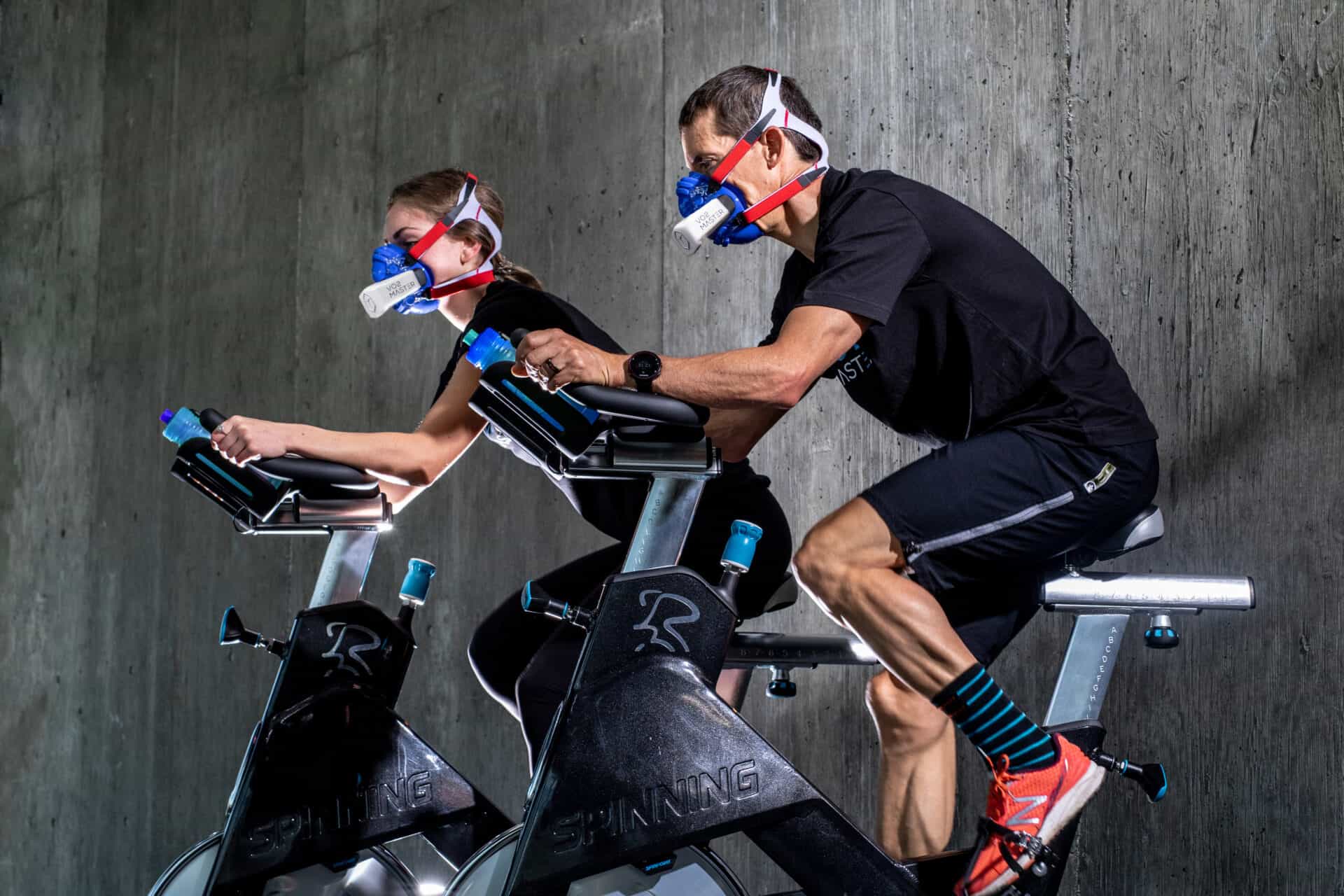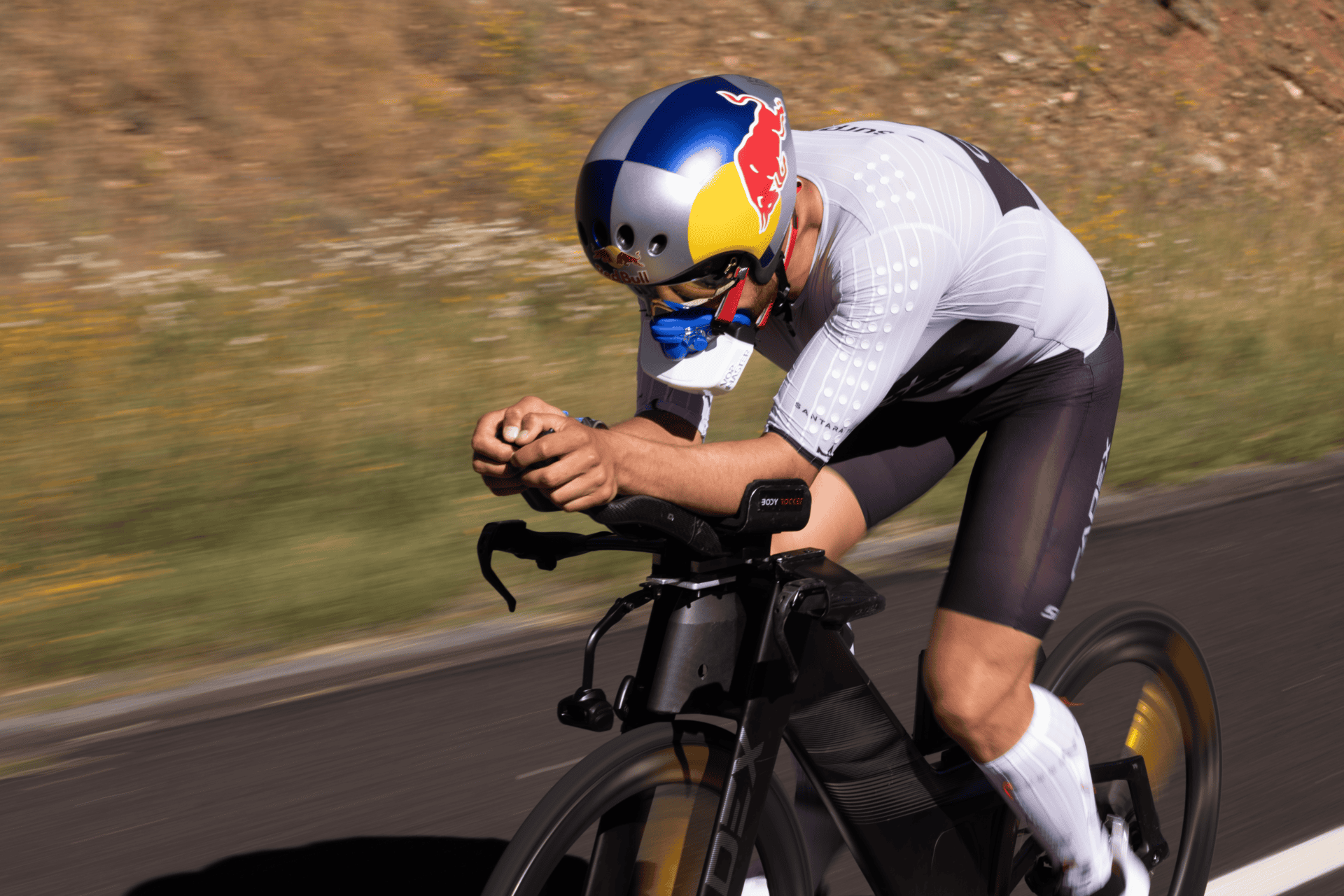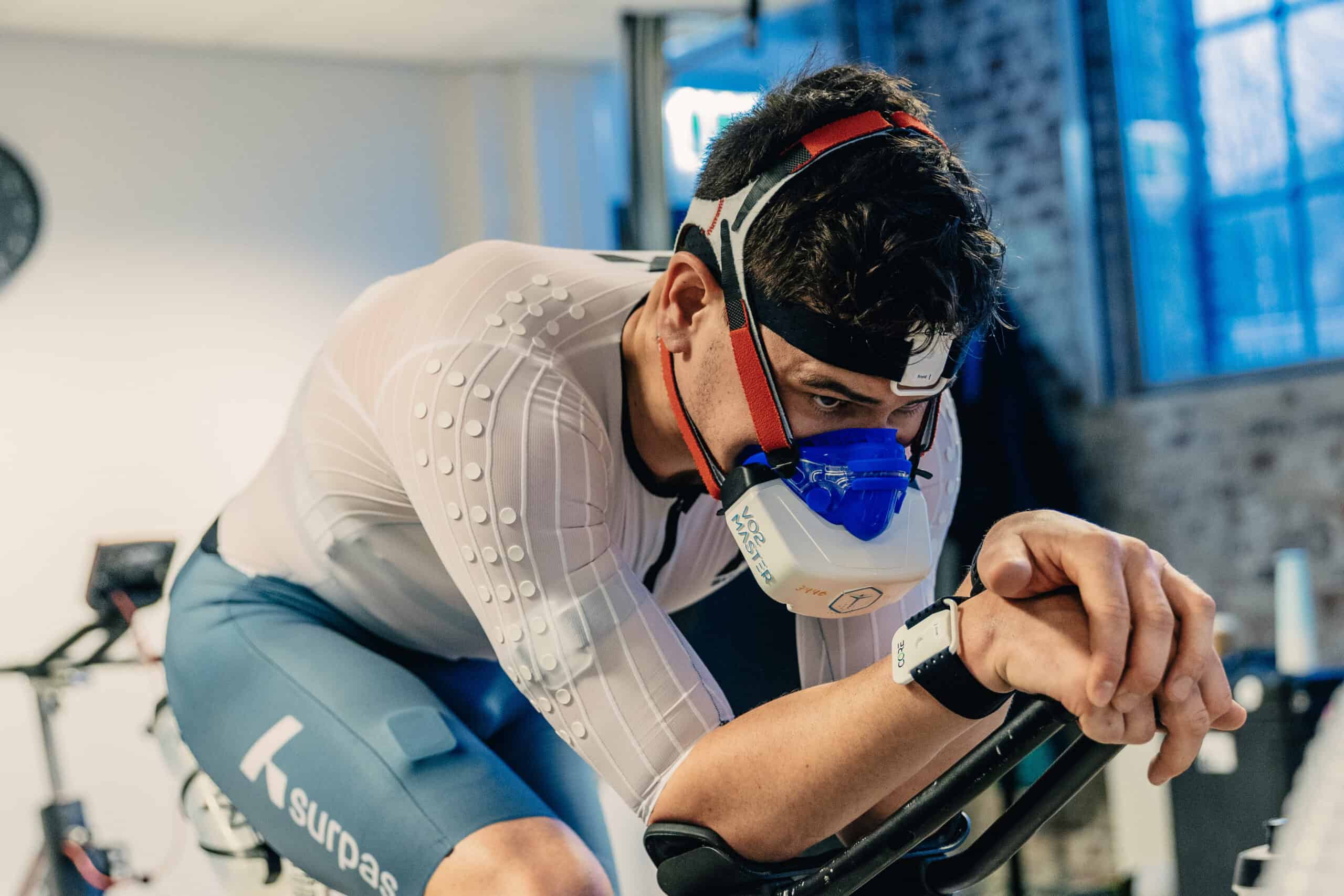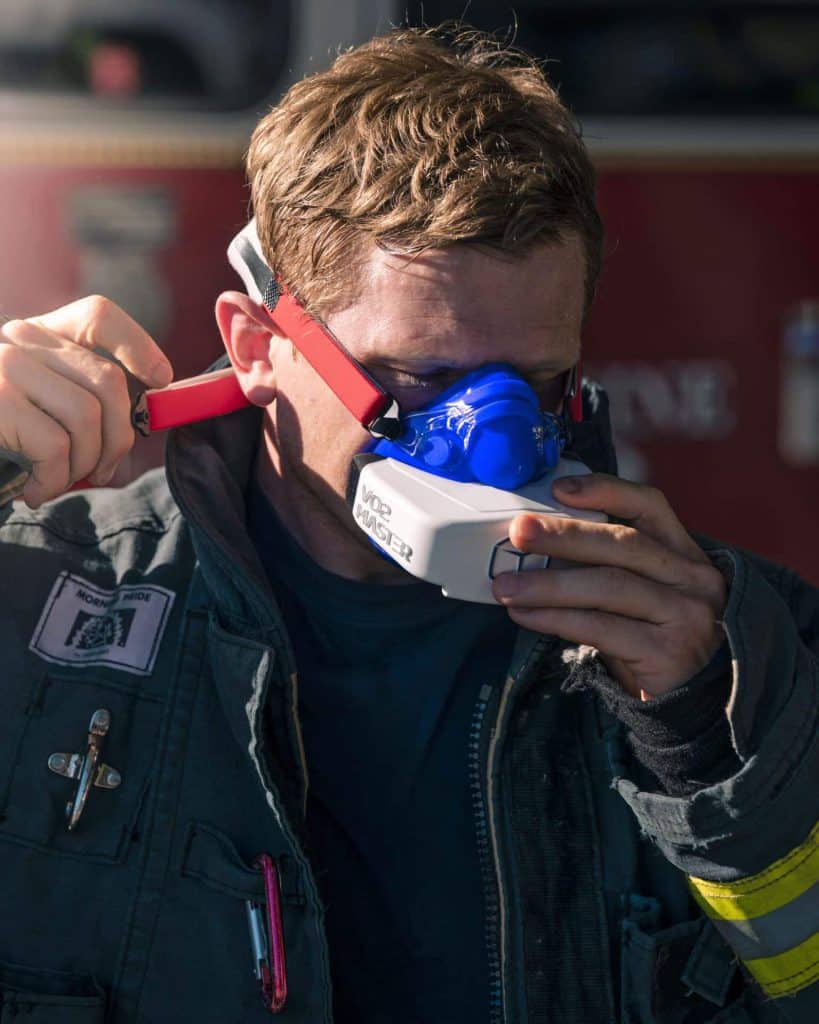Breathe Smarter, Ride Faster: Unlocking Performance Through Cadence and Respiration
What if the key to endurance performance isn’t just power or pace—but how you breathe? Dr. Andrew Sellars joins FLO Cycling’s Faster podcast to explore how breathing cadence, ventilatory thresholds, and neuromuscular efficiency can redefine how you help your clients train, recover, and perform.

What if you’ve been training your lungs wrong?
Most endurance athletes obsess over VO2 max, FTP, and lactate threshold—but what if the real game-changer was how you breathe?
In a recent episode of Faster, the podcast from FLO Cycling, Dr. Andrew Sellars—Anesthetist, coach, triathlete, and co-founder of VO2 Master—joined host Jon Thornham to discuss the science and mechanics of breathing, cadence, and performance.
The conversation revealed surprising insights that challenge traditional thinking and unlock new strategies for becoming a more efficient, faster athlete.
1. Breathing Cadence: The Overlooked Link to Efficiency
When you’re cycling or running, your breathing cadence—the rhythm of inhale and exhale—naturally aligns with your movement cadence. For example, runners might breathe in a 3:3 or 4:4 step pattern; cyclists may unconsciously match pedal strokes to breaths.
Why does this matter?
Because matching breath cadence with movement creates rhythm and harmony between respiration and muscular output.
When this is disrupted (like when your breathing becomes erratic), it’s often a sign you’re approaching your physiological limit.
Dr. Sellars explains that trained athletes often settle into breathing patterns that efficiently offload carbon dioxide (CO₂)—a key metabolic byproduct—at specific effort levels. The better you manage CO₂ through regulated breathing, the longer you delay fatigue.
2. VO2 Max Is a Major Part of the Equation
VO2 max—the maximum amount of oxygen your body can utilize during exercise—is widely seen as a gold standard for endurance performance. But it’s just one piece of a much larger puzzle.
Dr. Sellars illustrates this with an example: a technically skilled swimmer with a low VO2 max can often outperform a less coordinated athlete with a higher VO2 Max.
The difference? Movement economy and efficiency.
Leading-edge technology, like the portable VO2 Master analyzer, goes far beyond just VO2 max.
By measuring numerous key metrics such as ventilation rate, tidal volume and breathing frequency, they paint a more comprehensive picture of where your performance bottleneck lies—whether it’s lung function, coordination, metabolic inefficiency, or muscle fatigue.

3. Ventilatory Thresholds and Training Zones
Breathing patterns—specifically, how frequently and deeply we breathe—are governed primarily by the need to expel carbon dioxide (CO₂), not to bring in oxygen.
As exercise intensity rises, CO₂ builds up due to increased fuel metabolism, and the body responds by increasing breathing rate to maintain acid-base balance.
These changes in breathing rate occur at specific points known as ventilatory thresholds—VT1 and VT2—which are closely tied to metabolic processes and commonly mirror lactate thresholds:
- VT1 represents the transition from easy aerobic effort to more moderate intensity
- VT2 corresponds to the onset of heavy breathing and increased lactate accumulation, signaling high-intensity effort
Dr. Sellars emphasizes that these thresholds are pivotal for defining personalized training zones. For example:
- Zone 1 (below VT1) is ideal for recovery and building aerobic endurance.
- Zone 2 (between VT1 and VT2) targets fat metabolism and aerobic efficiency.
- Zone 3+ (above VT2) shifts toward carbohydrate use and anaerobic energy systems.
By measuring ventilation data with VO2 Master, coaches can pinpoint thresholds with high accuracy, making performance testing more accessible and portable.
Ultimately, understanding and training within the right zones—based on ventilatory thresholds—helps athletes optimize adaptations, prevent overtraining, and maximize metabolic efficiency.
It’s a smarter, more individualized way to structure endurance training.
4. You Can Train Breathing Like a Muscle
Most people don’t breathe efficiently—especially under stress. Children tend to use their diaphragm (belly breathing), while adults often resort to chest and accessory muscle breathing, which is less effective and more tiring.
Dr. Sellars also helped develop the Breathe Way Better device to address this. It helps athletes strengthen the respiratory system, retrain breathing patterns, and improve core stability by engaging the diaphragm and pelvic floor.
With focused breathing training, you can:
- Improve endurance and delay fatigue
- Enhance oxygen delivery and CO₂ removal
- Reduce breathing rate at submaximal intensities
It’s like strength training—but for your lungs.

5. Cadence Flexibility = Adaptability = Speed
Are you locked into one cycling cadence? You might be leaving watts on the table.
Dr. Sellars emphasizes that cadence flexibility—the ability to pedal efficiently across a wide range of RPMs—is a hallmark of top cyclists. Training at various cadences builds neuromuscular coordination and allows the rider to adapt to terrain, conserve energy, and stay in control.
He also explains that high cadence isn’t about just spinning faster—it’s about learning to relax your muscles during parts of the pedal stroke. Elite riders can pedal at 100+ RPM for hours because they’ve trained their bodies to contract and relax efficiently with every revolution.
5 Takeaways for Coaches and Endurance Athletes
Whether you’re training your athletes for a sprint triathlon or a multi-day gravel stage race, these insights can transform your approach:
- Match Breathing to Movement: Syncing cadence with breath enhances rhythm, reduces energy waste, and keeps an athlete aerobic longer.
- Don’t Obsess Over VO2 max: It’s important, but not everything. Efficiency, coordination, and breathing patterns matter just as much.
- Identify Ventilatory Thresholds and Optimize Zone Training: VO2 Master gives you specific metrics for your clients, whether VO2 max or submax testing.
- Train Your Athletes Breath Like Their Legs: Use the VO2 Master metabolic analyzer and Breathe Way Better to test and train your athletes’ breathing patterns off-bike.
- Get Comfortable Across Cadences: Help your athletes build their ability to spin smooth and efficient at 80, 90, or 100+ RPM. Adaptability = race-winning power.
Ready to Train Your Clients Smarter, Not Harder?
Whether you’re optimizing for performance, efficiency, or recovery, understanding how your clients breathe and move is essential. Learn how VO2 Master can help you unlock insights to take your coaching to the next level.
